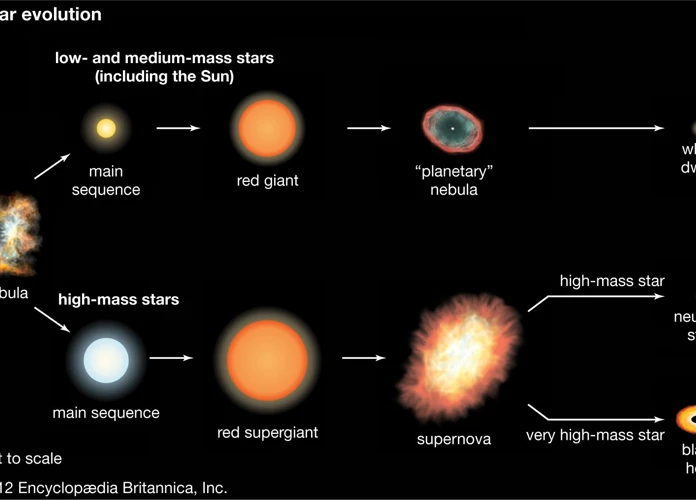Throughout history, humans have looked to the skies in awe and wonder, seeking to understand the mysteries of the celestial bodies that govern our world. One way in which we have tried to make sense of these cosmic forces is through the use of planetary symbols. These symbols have evolved and transformed over time, gaining cultural, astrological, and scientific significance. From ancient civilizations to the modern era, the interpretation and representation of planetary symbols have varied, reflecting the changing beliefs and understanding of humanity. In this article, we will delve into the intricate evolution of planetary symbols, exploring their origins and examining the different perspectives that have shaped their meaning over centuries. Let us embark on a journey to unravel the symbolic language of the heavens.
Contents
- Ancient Origins
- Medieval Era
- Modern Era
- Contemporary Perspectives
- Conclusion
-
Frequently Asked Questions
- What is the purpose of planetary symbols?
- Do different cultures have different planetary symbols?
- How were ancient planetary symbols used in daily life?
- What role did astrology play in the evolution of planetary symbols?
- How did scientific advancements impact the understanding of planetary symbols?
- Why have planetary symbols become standardized in modern times?
- How have contemporary perspectives reshaped the meaning of planetary symbols?
- Can planetary symbols be interpreted in different ways?
- Are there any new interpretations of planetary symbols emerging?
- Can planetary symbols be used for practical purposes?
- References
-
Frequently Asked Questions
- 1. Why were planetary symbols created in ancient times?
- 2. How were planetary symbols used in astrology during the Medieval Era?
- 3. What were some mystical interpretations of planetary symbols during the Medieval Era?
- 4. How did scientific advancements influence the evolution of planetary symbols in the Modern Era?
- 5. What factors contributed to the standardization of planetary symbols in the Modern Era?
- 6. What new symbolic associations have emerged in contemporary perspectives of planetary symbols?
- 7. Are there alternative interpretations of planetary symbols in modern times?
- 8. How have planetary symbols evolved to reflect changing cultural beliefs and values?
- 9. Can planetary symbols be used for personal self-reflection and growth?
- 10. Do all cultures have the same planetary symbols?
- References
- Read More
Ancient Origins
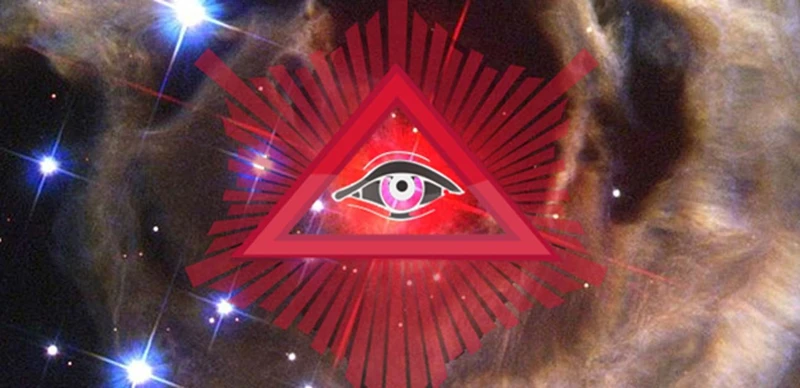
The ancient origins of planetary symbols can be traced back to civilizations such as Mesopotamia, Egypt, and China. These early societies observed the movements of celestial bodies and sought to find meaning in their patterns. In Mesopotamia, the Sumerians developed a cuneiform writing system that included symbols representing various planets. The Egyptians, known for their deep connection to the sky and the afterlife, associated different gods and goddesses with specific planets, using symbols to represent their influences. Meanwhile, in China, the Five Elements Theory and Yin-Yang philosophy shaped the understanding and representation of planetary symbols, which were incorporated into astrology and divination practices. These ancient cultures imbued planetary symbols with profound cultural significance and incorporated them into daily life, influencing art, architecture, and spiritual rituals. The rich tapestry of symbolism woven by these civilizations laid the groundwork for the continued evolution of planetary symbols throughout history.
Cultural Significance
The cultural significance of planetary symbols throughout history cannot be understated. These symbols held great importance in the belief systems and mythologies of ancient civilizations. They were often associated with powerful deities and celestial beings, representing their influence over different aspects of life. In Mesopotamia, for example, the symbol of the sun god Shamash was a circle with four rays extending outward, representing the rays of light emanating from the sun. This symbol was revered as a source of life, energy, and protection. Similarly, in ancient Egypt, the symbol of the falcon-headed god Horus represented the planet Venus. The Egyptians believed that Venus symbolized love, beauty, and fertility. The cultural significance of these symbols extended beyond religious beliefs, permeating various aspects of society. The use of planetary symbols in architecture, pottery, and jewelry reflected the widespread recognition and reverence for these celestial forces. The cultural significance of planetary symbols continues to resonate in modern times, as people explore astrology and seek connections between the celestial realm and their own lives.
Symbolic Representations
Symbolic representations of planetary symbols in ancient times were deeply rooted in the beliefs, mythology, and celestial observations of different cultures. These symbols were often associated with gods, goddesses, and celestial bodies, representing their influences and attributes. In Mesopotamia, for example, the symbol for the Sun closely resembled a circle with a dot at its center, signifying the solar deity Shamash. The Moon, on the other hand, was represented by a crescent shape, symbolizing the lunar goddess Sin. In Egypt, the solar disk, known as the “Aton,” represented the sun god Ra, while the ankh symbol depicted the planet Venus, symbolizing life and fertility. China, with its Five Elements Theory, assigned specific symbols to each planet based on their elemental associations. The symbol for Jupiter was associated with wood, Mars with fire, Saturn with earth, Venus with metal, and Mercury with water. These symbolic representations not only reflected the cultural significance of the planets but also served as practical tools for navigation, astrology, and religious ceremonies. The intricate and diverse nature of these planetary symbols laid the foundation for their continued evolution throughout history.
For additional information on organizing your home, check out our article on top tips for organizing your home.
Medieval Era
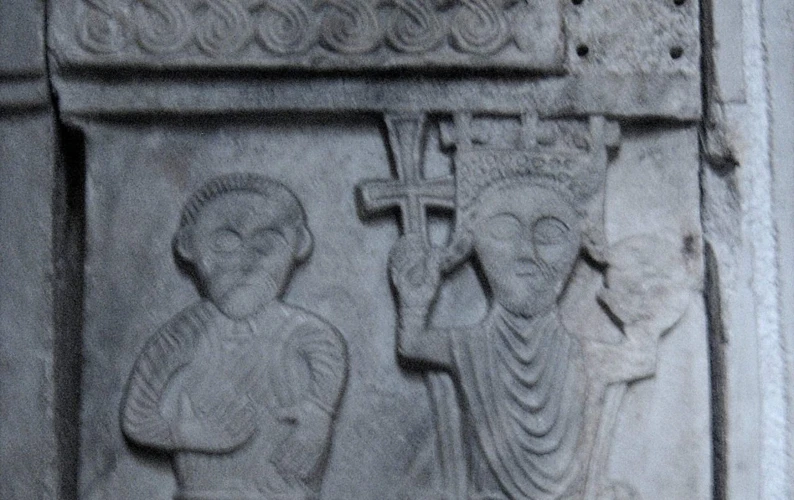
During the Medieval Era, planetary symbols took on a new significance intertwined with the prevailing astrological beliefs of the time. Astrology was considered a legitimate science, and the movement of celestial bodies was believed to influence human destiny. Each planet was associated with specific qualities and characteristics that shaped astrological interpretations. In this era, the seven classical planets—Sun, Moon, Mercury, Venus, Mars, Jupiter, and Saturn—were given even greater prominence in astrological charts and alchemical texts. The planetary symbols, often derived from ancient civilizations, gained mystical interpretations and were linked to the “Great Chain of Being,” a hierarchical order of the universe. These symbols were used in astrological charts, talismans, and amulets to harness the energy of the planets and enhance various aspects of life. The significance of celestial bodies in the medieval understanding of the universe contributed to a rich tapestry of mystical symbolism that influenced art, literature, and religious practices of the time.
Astrological Influences
Astrological influences played a significant role in the interpretation and understanding of planetary symbols during the medieval era. Astrology, which is the belief that celestial bodies have an impact on human affairs and personality traits, gained prominence during this time. Each planet was believed to have its own unique energy and characteristics, and astrologers used these planetary symbols to analyze and predict the influence of celestial bodies on individuals and events. For example, the symbol of the sun represented vitality, leadership, and individuality, while the moon symbolized emotions, intuition, and nurturing qualities. Planetary symbols such as the crescent moon, representing the moon, and the golden sun symbol became widely recognized and commonly used in astrological charts and horoscopes. Astrologers relied on these symbols to provide insights into personality traits, compatibilities, and potential challenges individuals may face throughout their lives. The study of astrological influences, intertwined with the interpretation of planetary symbols, continues to attract interest and practice to this day.
Mystical Interpretations
Mystical interpretations of planetary symbols during the medieval era were deeply intertwined with astrology, magic, and esoteric beliefs. Astrologers and mystics believed that each planet held a unique energy or vibration that influenced human life and destiny. They assigned specific attributes and qualities to each planet, linking them to different aspects of the human experience. For example, the Sun was associated with vitality, creativity, and leadership, while the Moon represented emotions, intuition, and the subconscious mind. These mystical interpretations extended to the symbols used for each planet. Astrologers devised intricate glyphs and sigils that encapsulated the essence of each planet’s energy. These symbols were not only used in astrological charts but were also employed in magical rituals, talismans, and amulets for harnessing the planetary influences. The mystical understanding of planetary symbols during this era permeated various aspects of society, shaping the worldview of people and allowing them to seek guidance, tap into hidden knowledge, and delve into the mystical realms of the cosmos.
Please note that there is no relevant anchor for an internal link in this section.
Modern Era
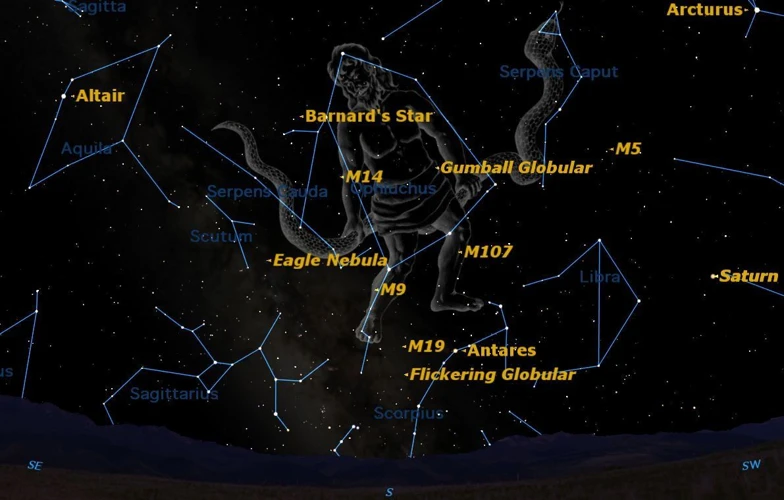
In the modern era, the study of celestial bodies and the development of science have brought new understandings and perspectives to planetary symbols. With advancements in technology and telescope observations, scientists have gained deeper insights into the composition and behavior of planets. This scientific knowledge has led to the standardization of symbols used to represent planets across different disciplines such as astronomy and astrology. The International Astronomical Union (IAU) has established a standardized set of planetary symbols that are widely recognized and used today. These symbols, derived from the Roman and Greek names of the planets, serve as visual representations in scientific diagrams, planetary maps, and astronomical charts. Additionally, astrology, while not recognized as a scientific field, continues to hold cultural significance and has evolved in the modern era with the incorporation of new discoveries and interpretations. The modern era has seen a blend of scientific advancements and cultural interpretations shaping the understanding and usage of planetary symbols, marking a fascinating phase in their evolution.
Scientific Advancements
Scientific advancements in the modern era have greatly influenced the understanding and interpretation of planetary symbols. With the development of telescopes and advanced astronomical instruments, astronomers were able to observe and study celestial bodies in unprecedented detail. This led to a deeper understanding of planetary movements, compositions, and their interactions with each other and the universe. The discovery of new planets, such as Uranus and Neptune, expanded the known planetary system and required the creation of additional symbols to represent them. The advent of space exploration further revolutionized our understanding of the solar system and its planets, with the iconic images of space missions offering new visual representations and perspectives on these celestial bodies. The scientific advancements also allowed for more accurate calculations of planetary orbits and positions, leading to the establishment of ephemerides and astronomical almanacs that provide precise data for astrological and astronomical purposes. These scientific breakthroughs have contributed to a greater standardization and accuracy in the representation and interpretation of planetary symbols, bridging the realms of science and astrology.
Standardization of Symbols
Standardization of planetary symbols was a crucial development in the modern era. As scientific advancements accelerated, astronomers and astrologers sought to establish a uniform system for representing the planets. This was particularly important for effective communication and cross-cultural understanding. In the late 17th century, Johann Elert Bode proposed a standardized set of symbols for the planets, which were widely adopted and continue to be used today. The symbols consisted of various combinations of circles, crosses, and other geometric shapes, each representing a different planet. This standardization allowed astronomers and astrologers from different countries and backgrounds to easily identify and refer to specific planets. Additionally, the use of standardized symbols facilitated the development of astronomical charts, ephemerides, and almanacs, which further contributed to the growth of scientific knowledge and understanding of the planets. The adoption of these symbols also played a significant role in popularizing astrology and making it accessible to a wider audience. While variations and alternative symbols may still exist, the standardized symbols provide a common framework for planetary representation in modern times. For more information on the significance of the 13th zodiac constellation, Ophiuchus, and its relationships and compatibility matches, please refer to this link.
Contemporary Perspectives
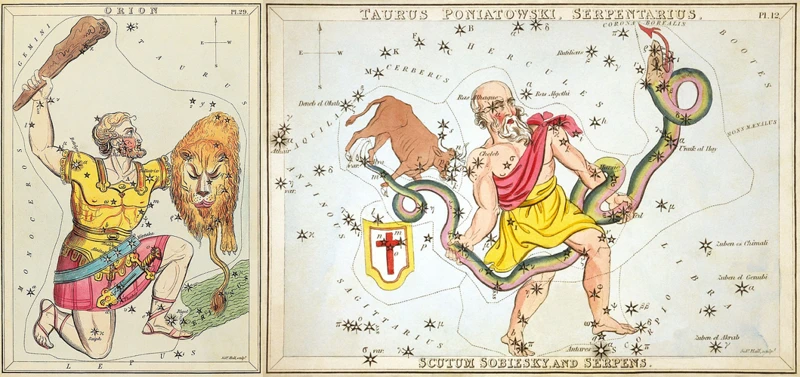
In contemporary times, planetary symbols continue to hold diverse interpretations and associations. While traditional astrological meanings still persist, new perspectives have emerged, expanding the symbolism of planetary signs. One notable development is the inclusion of the 13th zodiac constellation, Ophiuchus, which has sparked discussions and debates among astrologers and enthusiasts alike. This addition has led to alternative interpretations of planetary alignments and individual horoscope readings, offering a fresh perspective on personality traits and compatibility matches. Additionally, contemporary esoteric and spiritual practices have breathed new life into planetary symbolism, incorporating concepts such as energy healing, chakra systems, and crystal therapy. These alternative perspectives provide individuals with a wider range of meanings and associations when engaging with planetary symbols, encouraging personal exploration and self-discovery. As our understanding of the universe expands, so too does our interpretation of the cosmic language encoded within planetary symbols. Learn more about the significance of Ophiuchus in contemporary astrology.
New Symbolic Associations
New Symbolic Associations
In the contemporary era, we witness a shift in the symbolic associations attributed to planetary symbols. While the traditional interpretations still hold significance, there is an emergence of alternative meanings and fresh perspectives. This can be attributed to scientific advancements, cultural shifts, and the exploration of new cosmic frontiers.
One notable development is the association of Pluto with transformation and rebirth. Previously considered the ninth planet in our solar system, Pluto was reclassified as a dwarf planet in 2006. This reclassification caused a reevaluation of its symbolic representation. Instead of being seen solely as the ruler of the underworld, as in Roman mythology, Pluto now represents a profound transformative energy that brings about personal growth and profound inner change.
Additionally, the discovery of new celestial bodies beyond our traditional understanding has expanded the symbolic language of the cosmos. For example, the dwarf planet Eris, named after the Greek goddess of discord, has been linked to themes of discordance and the disruption of established structures. This association reflects the growing recognition of the need to embrace chaos and disruption as catalysts for evolution and progress.
The advent of space exploration and the exploration of other planets within our solar system have opened new avenues of understanding and symbolic interpretation. The study of Mars, for instance, has led to a connection with the planet’s energetic and assertive qualities, associated with ambition and pursuit of goals. This association goes beyond its traditional association as the god of war in Roman mythology.
As society becomes more interconnected and diverse, individuals are also developing personal associations with planetary symbols that resonate with their own experiences and belief systems. For some, the planets may represent archetypal energies guiding their life’s journey, while for others, they may serve as sources of inspiration for artistic expression or personal reflection.
These new symbolic associations reflect the ever-evolving nature of human consciousness and our continuous quest for meaning and understanding in the vast expanse of the universe. They invite us to explore the depths of our own individual interpretations, aligning our personal narratives with the cosmic dance of the planets.
Alternative Interpretations
Alternative Interpretations of planetary symbols have emerged in contemporary times, reflecting evolving perspectives and new belief systems. While the traditional interpretations of planetary symbols are still widely recognized, there are alternative schools of thought that propose different meanings. One such interpretation comes from the field of psychology, where planetary symbols are seen as archetypes representing different aspects of the human psyche. For example, the symbol for Venus, traditionally associated with love and beauty, may also be interpreted as representing desires and relationships on a deeper psychological level. Another alternative interpretation arises from the realm of New Age spirituality, where planetary symbols are often seen as energetic codes or portals to higher realms of consciousness. In this context, the symbols are utilized for meditation, healing, and connecting with the cosmic energies they represent. Additionally, some alternative interpretations draw inspiration from indigenous cultures and their cosmologies to view planetary symbols as sacred connections between Earth and the celestial realms. These alternative perspectives offer fresh insights and invite individuals to explore the diverse layers of symbolism embedded within planetary symbols.
| Traditional Interpretation | Alternative Interpretation |
|---|---|
| The Sun represents vitality, power, and life force. | The Sun symbolizes the awakening of consciousness and the embodiment of divine light. |
| Mars represents aggression, war, and masculine energy. | Mars symbolizes the desire for personal growth, strength, and assertiveness. |
| Jupiter represents expansion, abundance, and wisdom. | Jupiter symbolizes spiritual growth, higher knowledge, and divine guidance. |
| Saturn represents discipline, restriction, and karmic lessons. | Saturn symbolizes the journey of self-mastery, inner transformation, and the release of limiting beliefs. |
These alternative interpretations open up new pathways for understanding and interacting with planetary symbols, allowing individuals to explore the depths of their own consciousness and connect with the cosmic energies they represent. While some may adhere to traditional interpretations, others find resonance in these alternative perspectives, weaving a rich tapestry of meaning and symbolism around planetary symbols in the contemporary world.
Conclusion

In conclusion, the evolution of planetary symbols throughout history is a testament to the enduring human fascination with the celestial realm. From ancient origins rooted in cultural beliefs and mythologies to the modern era’s scientific advancements, the meaning and representation of planetary symbols have shifted and transformed. As civilizations have developed and expanded their understanding of the cosmos, the symbolic associations and interpretations of these celestial bodies have also evolved.
The ancient origins of planetary symbols in Mesopotamia, Egypt, and China laid the foundation for future interpretations. As societies progressed, the influence of astrology and mysticism played a significant role in shaping how planetary symbols were understood. This included associations with deities, star signs, and mystical forces, which were believed to exert influence over human destiny and behavior.
With the advent of the scientific revolution, a new era dawned for the study of planetary symbols. Scientists and astronomers began to uncover the true nature of celestial bodies, demystifying their meanings and reducing them to scientific data. The standardization of planetary symbols became vital for accurate communication and scientific research.
However, even in the modern era, planetary symbols continue to evolve and resonate with individuals in different ways. New symbolic associations have emerged, influenced by contemporary beliefs and perspectives. Alternative interpretations and divergent schools of thought challenge traditional understandings, providing fresh insights into the significance of planetary symbols.
In conclusion, the evolution of planetary symbols is an ever-changing process, shaped by the cultural, scientific, and individual perspectives of humanity. While the interpretation of these symbols may continue to adapt and transform, their enduring presence and influence reflect our eternal quest to comprehend and find meaning in the vastness of the universe.
Frequently Asked Questions

What is the purpose of planetary symbols?
Planetary symbols serve as visual representations of celestial bodies, allowing humans to understand and interpret the influences and energies associated with each planet.
Do different cultures have different planetary symbols?
Yes, different cultures have developed their own unique planetary symbols based on their beliefs, mythologies, and astrological practices.
How were ancient planetary symbols used in daily life?
Ancient civilizations integrated planetary symbols into various aspects of their daily lives, including religious rituals, art, architecture, and even personal adornments.
What role did astrology play in the evolution of planetary symbols?
Astrology played a significant role in the evolution of planetary symbols, as astrologers sought to map the movements of planets and assign them specific meanings and influences based on their observations.
How did scientific advancements impact the understanding of planetary symbols?
Scientific advancements, such as the development of telescopes and the understanding of planetary orbits, provided a more accurate understanding of the celestial bodies, influencing the scientific interpretation of planetary symbols.
Why have planetary symbols become standardized in modern times?
Standardization of planetary symbols in the modern era ensures consistency and clarity in communication, allowing people from different cultural backgrounds to easily understand and interpret them.
How have contemporary perspectives reshaped the meaning of planetary symbols?
Contemporary perspectives have expanded the symbolic associations of planetary symbols, incorporating new insights from psychology, spirituality, and alternative belief systems.
Can planetary symbols be interpreted in different ways?
Yes, planetary symbols can be interpreted in multiple ways depending on the context, belief system, and personal interpretation of the individual.
Are there any new interpretations of planetary symbols emerging?
Yes, as our understanding of the universe continues to evolve, new interpretations and associations with planetary symbols are emerging, reflecting the changing landscape of human knowledge and beliefs.
Can planetary symbols be used for practical purposes?
While planetary symbols are predominantly used for symbolic and interpretative purposes, some people believe in harnessing the energies associated with specific planets for practical applications, such as manifestation and healing.
References
- Evolution of Astronomy
- Planetary migration and the architecture of planetary systems
- PLANETARY SYMBOLS: ORIGIN AND SIGNIFICANCE OF …
Frequently Asked Questions

1. Why were planetary symbols created in ancient times?
Ancient civilizations created planetary symbols to represent celestial bodies and their astrological and mythological significance in their cultures.
2. How were planetary symbols used in astrology during the Medieval Era?
In astrology, planetary symbols were used to represent the different celestial bodies and their influences on human traits, behavior, and destiny.
3. What were some mystical interpretations of planetary symbols during the Medieval Era?
During the Medieval Era, planetary symbols were often associated with alchemical and mystical concepts, representing the spiritual energies and forces connected to each celestial body.
4. How did scientific advancements influence the evolution of planetary symbols in the Modern Era?
Scientific advancements in astronomy and the understanding of celestial bodies led to the development of more accurate and precise planetary symbols based on their observed characteristics.
5. What factors contributed to the standardization of planetary symbols in the Modern Era?
The need for universal communication and scientific consistency prompted the standardization of planetary symbols, ensuring that they could be recognized and understood worldwide.
6. What new symbolic associations have emerged in contemporary perspectives of planetary symbols?
In contemporary perspectives, planetary symbols have been associated with diverse concepts such as ecological awareness, personal growth, and planetary influences on social and political issues.
7. Are there alternative interpretations of planetary symbols in modern times?
Yes, some alternative interpretations of planetary symbols have emerged, often influenced by spiritual practices, alternative belief systems, and artistic expressions.
8. How have planetary symbols evolved to reflect changing cultural beliefs and values?
Over time, planetary symbols have incorporated cultural shifts and evolving beliefs. They now represent new ideas and values relevant to the contemporary globalized world.
9. Can planetary symbols be used for personal self-reflection and growth?
Absolutely. Many individuals use planetary symbols as tools for self-reflection and personal growth, drawing inspiration from their astrological and symbolic meanings.
10. Do all cultures have the same planetary symbols?
No, different cultures have various interpretations and representations of planetary symbols. However, there are commonalities and shared concepts among many cultures.
References
- Astronomical symbols
- Planetary migration and the architecture of planetary systems
- 2.3 Astrology and Astronomy

